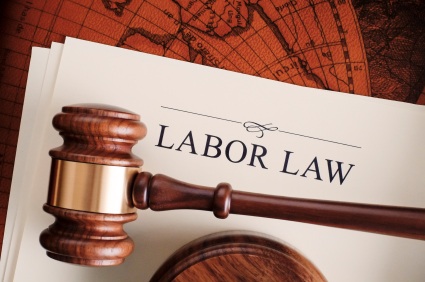Payroll
9 HR Traps to Avoid When Disciplining Employees
When an employee’s conduct or performance becomes an issue, employers need to take steps to correct the problem and prevent it from reoccurring. This isn’t always easy, and additional problems can arise if you don’t handle the situation carefully.
Nov. 13, 2017

This article first appeared on the Connect@ADP blog.
When an employee’s conduct or performance becomes an issue, employers need to take steps to correct the problem and prevent it from reoccurring. This isn’t always easy, and additional problems can arise if you don’t handle the situation carefully. Here are some discipline related pitfalls to avoid:
Inconsistency.
Disciplinary practices that reflect favoritism, or otherwise treat similarly situated employees differently, can lead to discrimination complaints and decreased morale. Train supervisors on how to enforce your policies and procedures on a consistent basis. Before disciplining an employee, look at how you handled similar situations in the past and make sure decisions are reviewed by more than one individual (such as, HR and an impartial member of the management team).
Lack of flexibility.
While policies should be enforced consistently, reserve the flexibility to take disciplinary action based on the facts and circumstances of each case. For example, don’t state that a verbal warning will be given for all first offenses no matter how severe. In your employee handbook, make clear that violating the company’s conduct and performance standards may result in disciplinary action, up to and including termination, and that your company reserves the right to decide what disciplinary action to take in any given situation.
Jumping to conclusions.
Before you take disciplinary action against an employee, make sure you have a full understanding of the issue and an accurate and impartial assessment of the employee’s performance. If the issue is related to alleged wrongdoing in the workplace, you generally have a responsibility to conduct a prompt, thorough, and impartial investigation into the allegation(s).
Disciplining in front of co-workers.
The point of a disciplinary meeting is to correct the problem, not to embarrass the employee. Hold the discipline meeting in a private location, but consider having another company representative present as a witness. During the meeting, tell the employee exactly what the problem is, how the issue is affecting the company, what steps he or she must take to correct it, and the consequences of failing to do so.
Failing to give the employee an opportunity to respond.
Let the employee know that you want him or her to improve, that you are willing to help, and that he or she can comment and/or raise their concerns freely. At the end of the meeting, ask the employee to acknowledge the discussion in writing. While the employee may not necessarily agree with the disciplinary action, their acknowledgment serves to document that the disciplinary meeting took place and he or she is aware of the problem.
Getting into heated exchanges.
When confronted with a performance or conduct issue, the employee may respond with anger, intimidation, complaints, blame, silence, or an unwillingness to acknowledge the problem. Remain calm and respectful, regardless of the employee’s reaction. If the employee refuses to calm down or discuss the matter in a rational way, end the meeting and reconvene at a later time.
Disciplining employees for protected activity.
Various laws protect employees for engaging in certain activities. For example, if an employee takes protected leave, the employer may not count this time against the employee when assessing his or her attendance or performance. Additionally, under the federal National Labor Relations Act, employees have the right to act together, with or without a union, to improve wages and working conditions, and to discuss wages, benefits, and other terms and conditions of employment. If employees discuss improving their wages or whether to join a union, in or out of the workplace, the employer may not take adverse action against them. Note: There are a number of other laws that protect employees for engaging in other types of conduct. Check your applicable law to ensure compliance.
Failing to align corrective action with severity of the offense.
If an investigation reveals a workplace violation, take immediate and appropriate corrective action. The corrective action should reflect the severity of the offense and the employee’s history of misconduct. If the discipline is overly lenient, it may not remediate the problem and may not deter employees from engaging in the misconduct in the future.
Spotty documentation.
It’s a best practice for employers to promptly document and retain all disciplinary actions, including verbal warnings, in the employee’s personnel file. In addition, maintain a separate investigation file that includes: (1) all interview notes; (2) all communications with witnesses, the complainant(s), and the alleged offender(s); (3) all written witness statements; (4) all documents relating to the allegation(s); (5) the investigator’s report; and (6) documentation of any remedial action taken.
Last words:
Clearly communicate workplace rules and procedures in writing so that employees know exactly what is expected of them. Enforce the rules consistently, make sure your disciplinary practices comply with all applicable laws, and retain all discipline related documentation.
